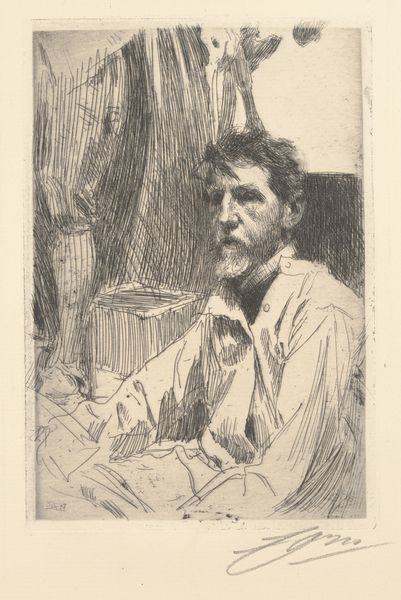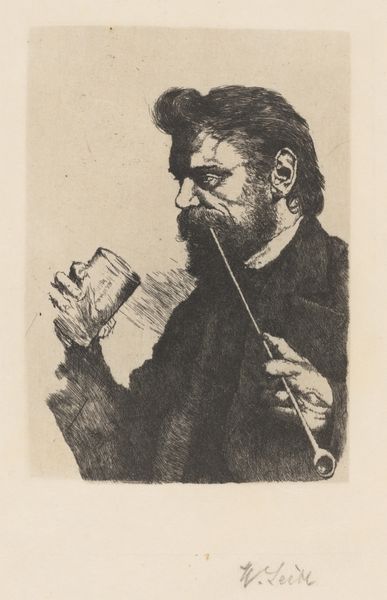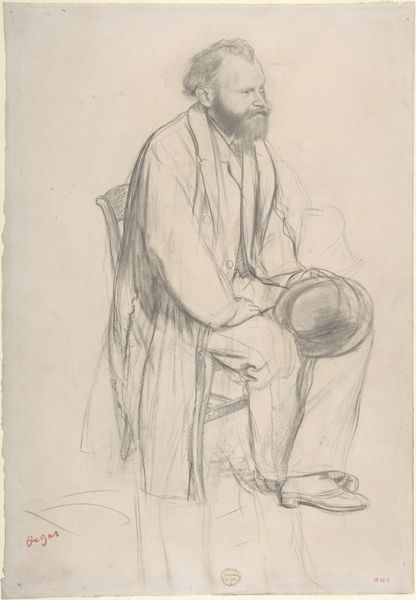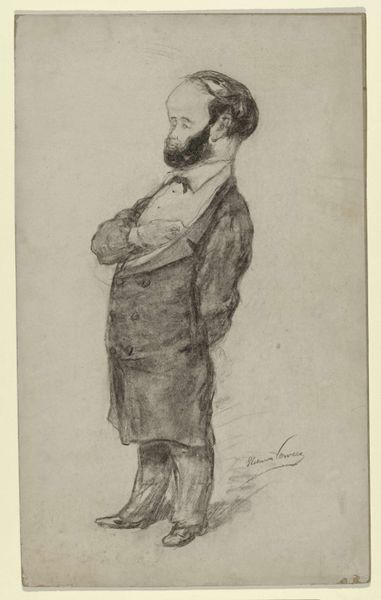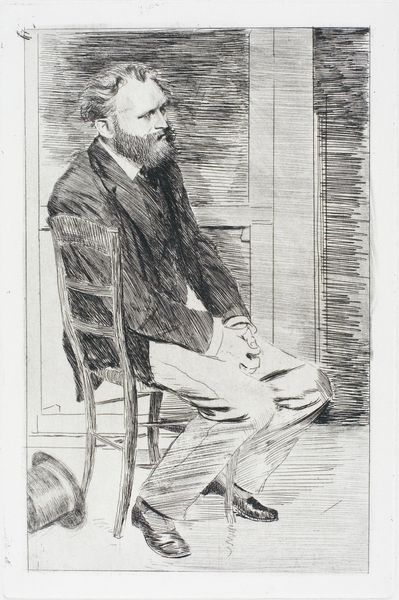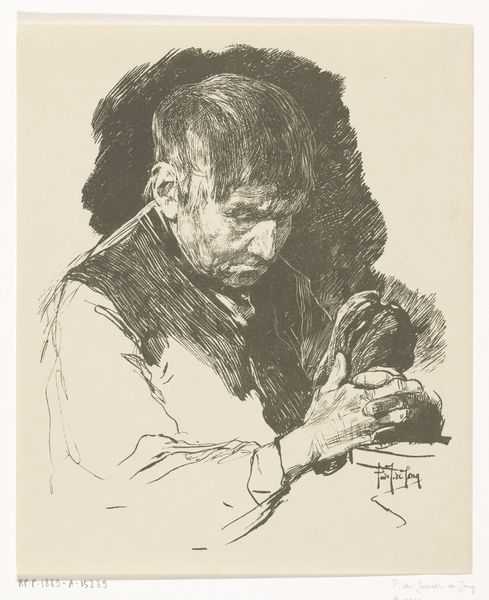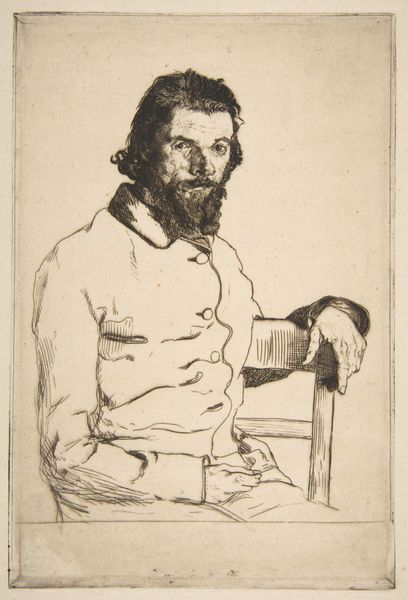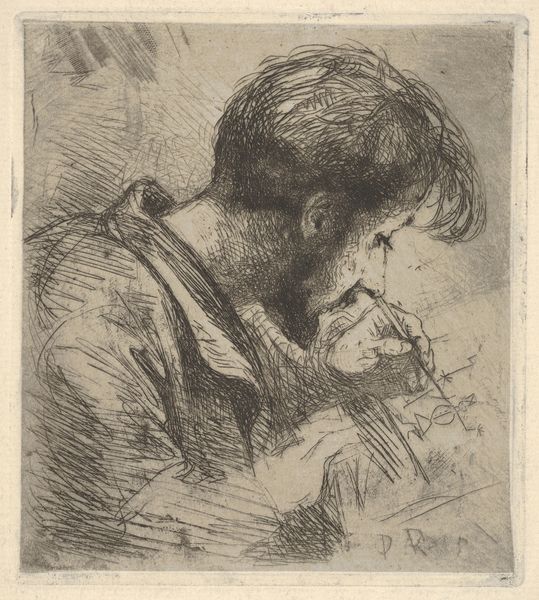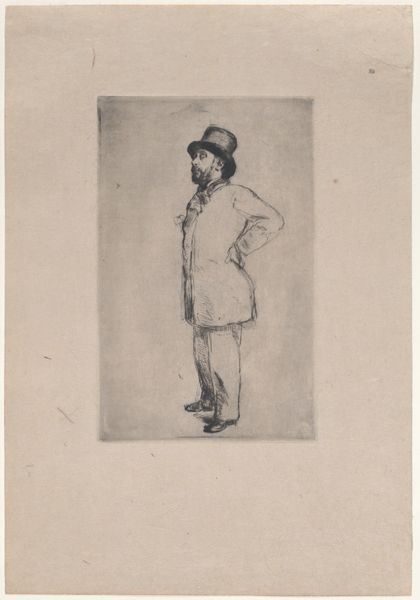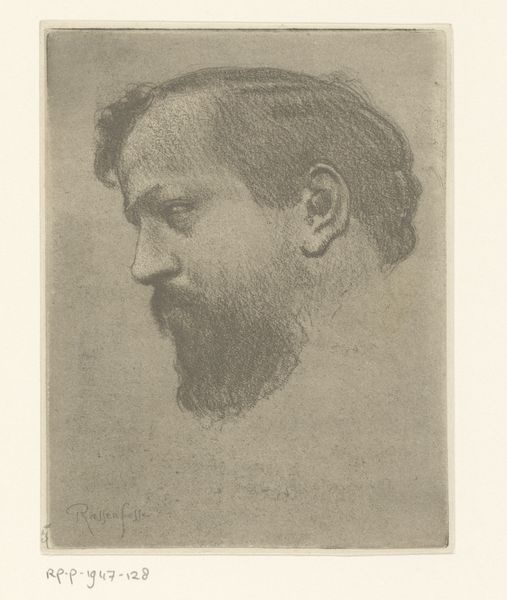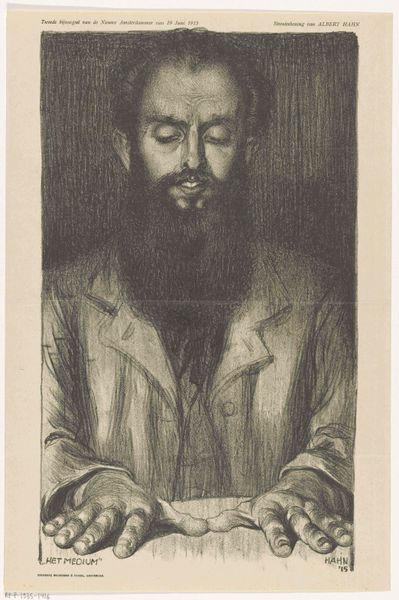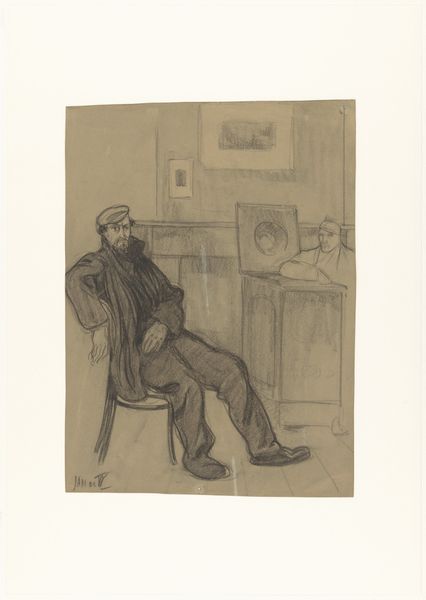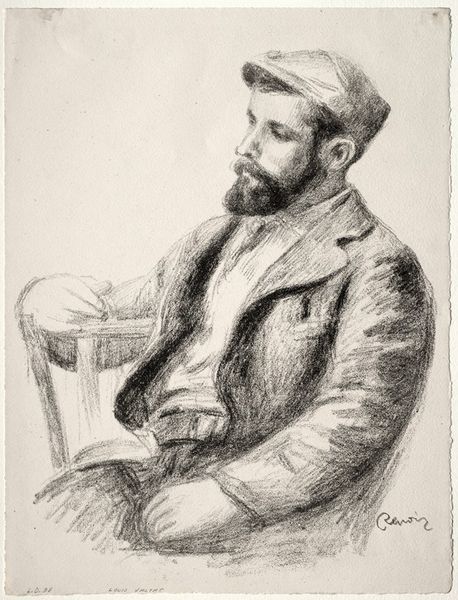
drawing, print, etching
#
portrait
#
drawing
# print
#
etching
#
men
#
realism
Dimensions: Sheet: 14 5/16 × 9 15/16 in. (36.4 × 25.3 cm) Plate: 10 11/16 × 7 13/16 in. (27.2 × 19.9 cm)
Copyright: Public Domain
Curator: Before us is Marcellin Desboutin's etching "Portrait of Henri Rouart" from 1875, currently residing here at the Metropolitan Museum of Art. Editor: It strikes me as intimate, almost melancholic. The soft etching gives Rouart a contemplative air, but also speaks volumes about the artist-sitter relationship; their shared social context must have shaped this kind of sensibility. Curator: Indeed. Etching as a printmaking process allowed for a certain fluidity, unlike say, engraving. Desboutin scratches through an acid-resistant layer on a metal plate; the acid then bites into the exposed lines, creating grooves to hold the ink. We are left with this very textural print from the plate's impression. Editor: We need to think about whose likeness is captured through this labour too! Henri Rouart, an engineer and industrialist deeply connected to the Impressionist movement, being captured here tells us much about class, gender and patronage. How often do we delve into these interconnections? Curator: Very important! Looking at Rouart's clothing, a tailored jacket, hints at his social status. It invites thoughts of factories where his family fortune was built: mass produced fabrics available for consumption versus the bespoke craft involved here to present his very image. Editor: Right, and isn’t the act of capturing Rouart’s likeness via a print significant here? This isn’t some one-of-a-kind oil painting reserved for a privileged view but a work conceived for wider circulation through printed image reproductions. One could imagine how a medium like this can give way to a different kind of ownership, or visual entitlement for those in Rouart's social circle. Curator: Perhaps... and one could think about the market, too: prints catered to a different economic sphere of collecting than paintings! Anyway, I really appreciated examining the details of the etching itself, understanding the technical skill required to render the tonal gradations and the play of light. Editor: Absolutely, considering the portrait beyond mere artistic representation to unearth layers of context enriches our engagement with this powerful image of nineteenth century male intellectual life.
Comments
No comments
Be the first to comment and join the conversation on the ultimate creative platform.
